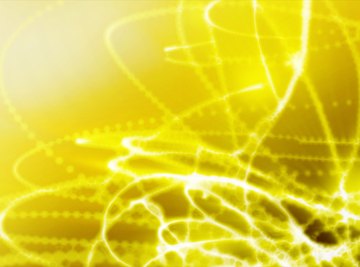
In 1909, Robert Millikan determined that the electron has a charge of 1.60x10^-19 Coulombs. He determined this by balancing the gravitational pull on oil droplets against the electric field needed to keep the droplets from falling. A single droplet would have multiple excess electrons, so the common divisor of the charge on multiple droplets gave the charge of a single electron. Derivative of this experiment, a common question of introductory physics students today is how many excess electrons are on a charged sphere if its total charge is found by experiment to be "x" Coulombs, assuming you already know a single electron’s charge?
A harder problem is to solve for the number of electrons without knowing the charge of an electron beforehand. For example, you may find that the five droplets have charges of 2.4 x 10^-18, 3.36 x 10^-18, 1.44 x 10^-18, 2.08 x 10^-18, and 8.0 x 10^-19. Finding the charge of a single electron then becomes a matter of solving for the common divisor of 240, 336, 144, 208, and 80. The problem here is that the numbers are so large. One trick to simplifying the problem further is to find the differences between nearby numbers. 240 - 208 = 32. 2 x 80 - 144 = 16. So the number 16 pops out. Dividing 16 into the original 5 data points shows this is in fact the right answer. (When the numbers have a significant error range, the problem becomes very hard indeed.)
Suppose you have determined the charge of an oil drop to be, say, 2.4 x 10^-18 Coulombs. Note that the caret ‘^’ refers to exponentiation. For example, 10^-2 equals 0.01.
Suppose also that you know in advance that the charge of an electron is 1.60x10^-19 Coulombs.
Divide the total excess charge by the known charge of a single electron.
Continuing with the example above, 2.4 x 10^-18 divided by 1.60 x 10^-19 is the same as 2.4 / 1.60 times 10^-18 / 10^-19. Note that 10^-18 / 10^-19 is the same as 10^-18 * 10^19, which equals 10. 2.4/1.6 = 1.5. So the answer is 1.5 x 10, or 15 electrons.
Tips
References
- "Concepts in Modern Physics"; Arthur Beiser; 1987
Tips
- A harder problem is to solve for the number of electrons without knowing the charge of an electron beforehand. For example, you may find that the five droplets have charges of 2.4 x 10^-18, 3.36 x 10^-18, 1.44 x 10^-18, 2.08 x 10^-18, and 8.0 x 10^-19. Finding the charge of a single electron then becomes a matter of solving for the common divisor of 240, 336, 144, 208, and 80. The problem here is that the numbers are so large. One trick to simplifying the problem further is to find the differences between nearby numbers. 240 - 208 = 32. 2 x 80 - 144 = 16. So the number 16 pops out. Dividing 16 into the original 5 data points shows this is in fact the right answer. (When the numbers have a significant error range, the problem becomes very hard indeed.)
About the Author
Paul Dohrman's academic background is in physics and economics. He has professional experience as an educator, mortgage consultant, and casualty actuary. His interests include development economics, technology-based charities, and angel investing.
Photo Credits
Jupiterimages/Photos.com/Getty Images
